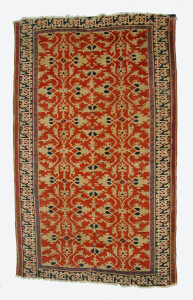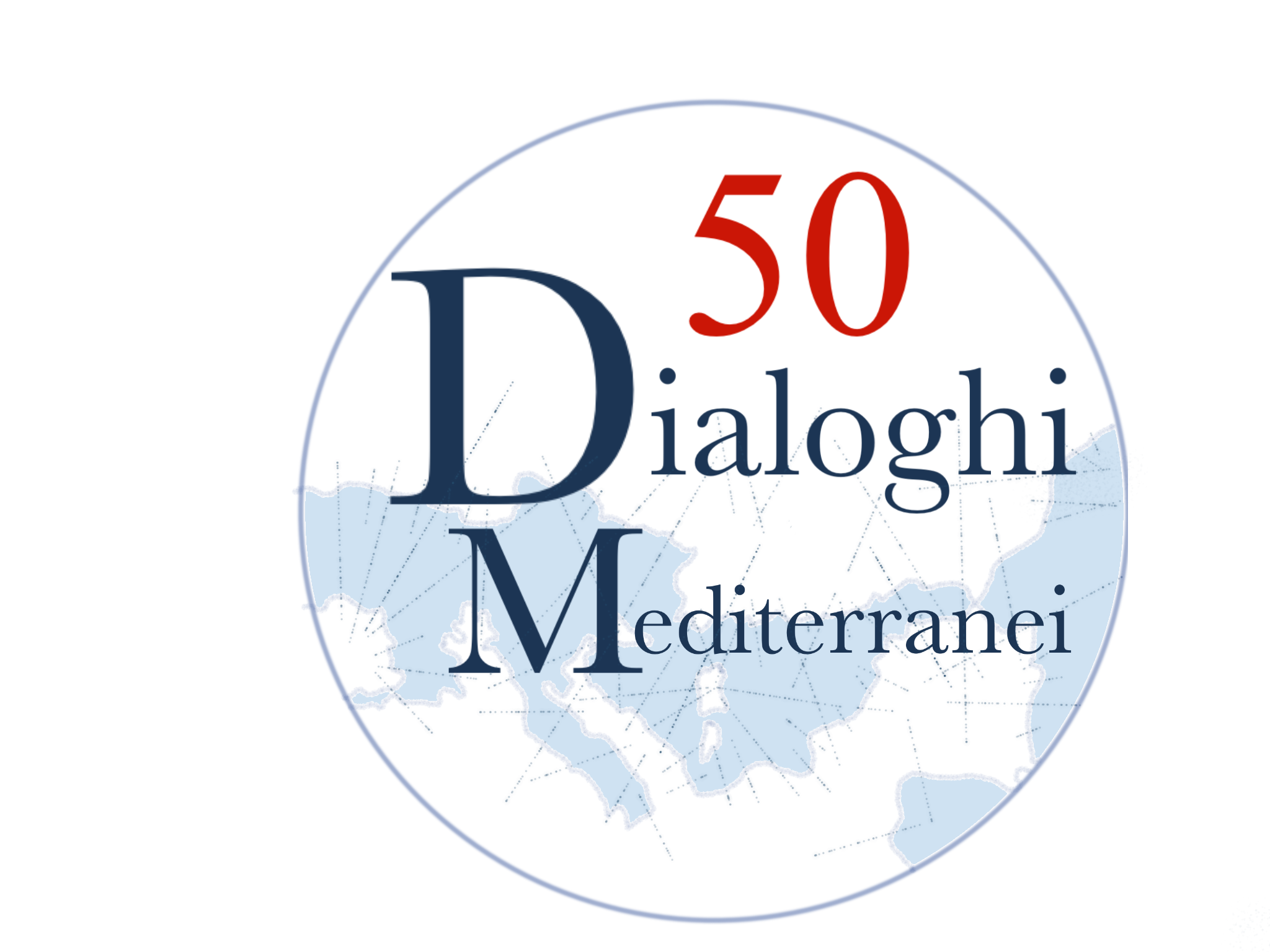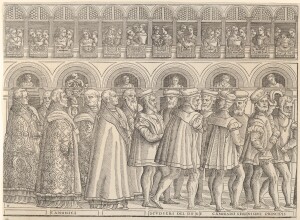
Matteo Pagano (1515–1588), Procession of the Doge in Venice, 1556–61 (The Metropolitan Museum of Art, New York, The Elisha Whittelsey Collection)
di Roberta Marin [*]
During the Renaissance the cultural and commercial ties between the opposite shores of the eastern Mediterranean were strong. These ties dated back to the Medieval period (Mack 2002: 73) when the final legs of the caravan routes from Central Asia and Persia were controlled by the Muslim rulers of Syria and Egypt. Italian merchants imported huge quantities of goods to Europe via Genoa, Ancona, Pisa and, of course, Venice. From the end of the 11th to the second half of the 13th century, the presence of the Crusaders in the Middle East certainly contributed to the trade of luxury imports of objects for personal and domestic use (Erdmann 1970: 95).
The growing wealth of European aristocratic families steadily increased the demand. Importation of silk, textiles, metalwork, glass, ceramics, precious and semi-precious stones, sugar and spices to Europe counterbalanced the exportation of iron, wood, salt, linen, velvet, corals to the Middle East and Turkey (Hedayat Munroe 2012). With the rise to power of the Mamluks (1250-1517) in Egypt and Syria, the restrictions on trade increased and Italians and Venetians had to renegotiate their privileges. In 1291, the Mamluks conquered the last Crusaders’ household in the Holy Land and as a consequence the Pope Nicholas IV issued a decree prohibiting any kind of trade with Muslim lands (Carboni, Kennedy and Marwell, ‘Venice and the Islamic World: Commercial Exchange, Diplomacy, and Religious Difference’, 2007).
The embargo limited the commerce, but it did not manage to fully stop it. Venice and other cities violated the embargo, using Cyprus and Crete as intermediary stations in sending the goods to Italy and Europe. In this already multi-structured picture of trade relations between East and West, new players entered to the stage, the Mongols. Despite their reputation as bloodthirsty warriors and ruthless conquerors, the Mongols were tolerant of other religions and cultures and ensured that Europeans merchants could continue with their trading activities via the mercantile routes that formed the Silk Road network [1]. In the period between 1240s to 1360s, the commercial negotiations took place mainly in the area around the Black Sea and Persia (Jacoby 2010: 71-88), above all for the impediments created by the Pope and his decree. The Portuguese discovery of the sea route around Africa at the end of the 15th century had a great commercial impact [2], which was also to become one of the reasons for the collapse of the Mamluk Empire and the growing power of the Ottomans, who administered the empire from their successive capitals, Bursa initially, followed by Edirne and finally Constantinople, conquered by the young sultan Mehmet II in 1453 (Carboni, Kennedy and Marwell, ‘Venice and the Islamic World, 828-1797’, 2007) and renamed Istanbul. With the Ottomans a new chapter was to start in the history of the commercial relations between Italy, mainly Venice, and Istanbul (Carboni, Kennedy and Marwell, ‘Venice’s Principal Muslim Trading Partners: The Mamluks, the Ottomans, and the Safavids’ 2007). Venice had always relied on trade to support its economy and maintain its status of prominent city, both at national and international level. Venice developed such a great commercial empire thanks not only to the ability of its merchants and the skilful diplomacy, but also to its strategic location, at the very heart of Europe and protected by a net of lagoons and a wide area of marshlands (Curatola 1983: 48). The very nature of its territory, however, prevented Venice to develop agriculture activities and produce primary material of any sort, forcing the city to look beyond its borders and to become extensively engaged in trade. Venice depended on the exchanges with the East, and the main trading products to be exported came from Northern Europe and reached Venice via the Brennerpass. The city became known as Porta Orientalis, because it was the gateway to luxurious goods from the Orient, among others the wonderful carpets (Denny 2007: 175).
Venice was also the place where some peculiar characteristics belonging to Oriental traditions were adopted, mainly in term of cuisine, fashion and languages. Some words, for example, even if not in their original form but in a sort of corrupted version, have become part of the Venetian vocabulary. Also for this reason Venice was undoubtedly the most Oriental of the Italian and European cities. Going back on time, we have the remarkable figure of Marco Polo (1254-1324), who together with his father and uncle, travelled from Venice to China and spent 25 years at the court of Kublai Khan, the legendary Great Khan of the Mongol Empire. Marco Polo is perhaps the most famous of the Venetians who travelled so far to establish commercial relations with distant countries, but thousands of Venetians lived abroad and tried to create a profitable exchange of goods with the wealthy empires of the East [3]. Throughout the Renaissance period, young members of the Venetian merchant nobility were sent abroad to learn a foreign language, mainly Arabic, Greek or Ottoman Turkish and to gain experience in trading (Howard 2007: 82).
Sometimes they have lived abroad for years, sometimes for decades. Giosafat Barbaro, for instance, lived in Tana on the Black Sea for 16 years before being appointed as Venetian ambassador in Persia (Lockhart 1973: 16-23; Tucci 1996: 117-32), and Nicolò dei Conti was in Cairo from 1415 to 1439. Often these young men, trained in the art of trade, ended up covering important positions in government and public service. Some of them have written relazioni (accounts, reports) based on their travels and stays in the Middle East, which have become invaluable tools for acquiring knowledge about the Islamic world from political, historical, commercial and even artistic point of view. For the Venetians, who travelled abroad, the main ports of calls were Istanbul, Damascus, Aleppo, Cairo, Tripoli and Alexandria. In these cities, lodging, food, public bath and a church were arranged for them. Multilingual interpreters, called dragomans (Abbasbeyli 2023), were also available for hire, although many merchants, as already mentioned, learned Arabic, Persian and Ottoman Turkish in order to be able to conduct merchant transactions without the need for intermediaries. Venetians became even leaders in the shipbuilding industries [4].
They adopted a particular type of large cargo ship, known as cog or round ship, which was armed with crossbowmen, who protected merchants and goods from pirate attacks. From the 14th century, large mercantile ships were docked along the quay right in front of Palazzo Ducale, a quay that was, and still is, known as Riva degli Schiavoni (from the name of the Slavs, especially Dalmatians who were used to live in the area). In the bird’s eye view of Venice, made by Jacopo de’ Barbari in 1500, the quay was orderly and the basin housed huge ships. In an anonymous Venetian woodcut with the representation of the Riva degli Schiavoni with the Doge of Venice embarking the Bucintoro, the state barge, however, the area is portrayed as very lively and dynamic, thanks to the numerous activities that took place there. In any case, this area of Venice was the heart of the trade and the commerce with the Orient. The key to Venetian success rested on the diplomatic skills put in place by the Venetians (Howard 2010, p.161ff.). Doges and ambassadors were involved in creating a network with the ruling Eastern dynasties and facilitated the process by ingratiating themselves with expensive gifts (Curatola 2010: 173-181).
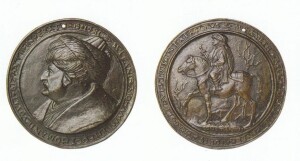
Costanzo da Ferrara Medagli del Sultano Mehmed II, 1481, bronzo, Metropolitan Museum of Art New York
At a lower level, there were the consuls or bailii, who lived abroad for a couple of years, while one of the most coveted senior positions in the Venetian diplomatic service and the highest paid was that of ambassador to the Sublime Porte in Istanbul (Carboni, Kennedy and Marwell, ‘Commercial exchange, diplomacy, and religious difference between Venice and Islamic World’, 2007). Sometimes even artists were sent to the Eastern courts, both because they were invited by the rulers or as emissary. An example is the well-documented interest expressed by the Ottoman sultans, especially Mehmet II and Suleyman the Magnificent, in Italian art. Indeed, in 1479 Mehmet II asked that a famous Renaissance artist be sent to Istanbul and Venice chose Gentile Bellini (1429-1507) (Campbell & Chong 2005). The equally famous medalist Costanzo di Moysis, better known as Costanzo da Ferrara (1450-1524), also stayed at his court as well, sent to Istanbul by the King Ferrante I of Naples. Both artists lived at the court in Istanbul and created portraits and medals of the rulers. Bellini produced some of the most celebrated portraits of Mehmet II, portraits that made the sultan famous in all European courts thanks to the copies circulating in that period. Portraits of the sultan on medals also became very popular. What we cannot prove at present is the existence of large numbers of Ottoman merchants, travellers and diplomats in Venice. Even if the portraiture of men wearing a turban and veiled women was included in some Renaissance paintings, such as, for instance, in the famous The Procession in Piazza San Marco by Gentile Bellini, today in the Gallerie dell’Accademia in Venice, it seems that Eastern merchants were not permitted to trade in person or reside in Venice. The Fondaco dei Turchi (or Turkish Inn), for instance, was established only in 1621. The few merchants who reached the shores of the Serenissima on Venetian ships had all their transactions recorded by local officials and the rare occasions when Ottoman diplomats visited Venice were described in contemporary chronicles as special events, not at all as a routine. Already in the mid-14th century commercial treaties were established with Sultan Murad I (r. 1362-89) and Sultan Bayezid I (r. 1389-1402) but continued and intensified with Sultan Mehmet II Fatih (r. 1444-46 and 1451-81) and Sultan Suleyman the Magnificent (r. 1520-66).
Although the trade between Venice and the Ottoman Empire was intense, the frequent wars to defend the Venetian colonies in the Aegean and to protect the Balkan region forced the two adversaries to renegotiate treaties and privileges. In 1415, for instance, Ottoman ships were not allowed to sail in the Aegean, but, on the other hand, Venetian merchants had to pay an annual fee to continue to free trade with the empire. Despite the wars and losses, the Venetians were always eager to resume good trade relations with the Ottomans (Carboni, Kennedy and Marwell, ‘Venice’s Principal Muslim Trading Partners: The Mamluks, the Ottomans, and the Safavids’ 2007 ) to the point of humiliating themselves in order to obtain them. A case in point is the loss of importance of the bailo, the consul in Istanbul, from the late 15th century.
Another emblematic case, perhaps even more poignant, is the acceptance by the Venetians of a treaty in which they agreed to lose control over their former colonies of Thessaloniki, Negroponte, Tana and Scutari. What they received in return was the possibility to continue trading with the empire. After the fall of the Mamluks in 1516-17, Egypt and Syria became provinces of the Ottoman empire. Because of that, Venetians revived the commerce with these countries, commerce that was languishing after the embargo established by the Pope, and they were able to reinstate consulates in Cairo and Aleppo. Among the Italian cities, Venice was certainly the one with the strongest bond with the Ottoman empire in the 15th and 16th centuries. In the 17th century, however, English merchants overtook the Venetians in Istanbul, because some of the raw materials produced in northern Europe cost much less than Italian products and thus became more competitive in the trade with the Ottomans. Another problem in importing luxury goods from the Ottoman empire was the Italian imitations of the same luxury goods, which were also manufactured for export. The old trade between East and West was obsolete, while a new, more international market arose. But why were Oriental objects so common in Venice and Italy?
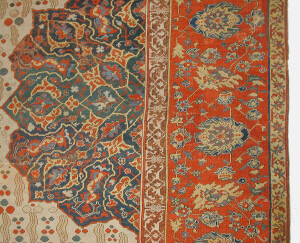
Particolare di un tappeto a medaglione Ushak su fondo bianco Turchia, 17°-secolo, di lana (Metropolitan Museum of Art New York)
According to Mack in her Bazaar to Piazza Islamic Trade and Italian art 1300-1600, the Oriental objects had some notable features that made them popular. The first relevant factor was based on their portable seize, the second on the variety of their decoration and the third and last, on «the strong exotic appeal» (Mack 2002: 7). The cargo ships coming back from the East were loaded with spices, cotton, silks but also velvets, ceramics, inlaid metalwork, glass, gilded bookbindings, illustrated manuscripts and finally precious carpets. There are evidences in the documentation kept in public and private archives which confirm, however, that the carpet trade never achieved the popularity of objects produced in other media and exported to Italy and Europe. Carpets were very expensive and to some extent rare, although the carpet weaving tradition in some places, such as in Mamluk Cairo, became a state-level industry with patterns created in court workshops (Erdmann 1970: 198). Carpets were traded to Europe but also to the Far East. Until the beginning of the 16th century, Ottoman carpets were decorated with stylized animals and geometric motifs (Batári 1994: 11-27).
After the conquest of Persia and Egypt, new designs and patterns became part of the Ottoman weaving tradition. Even if the traditional motifs were by no means abandoned, the central medallion with a quarter of a medallion on each corner, also typical of Persian carpets, was adopted. Among the carpet manufacturing centres, the city of Ushak was destined to become the most popular for carpets of this kind. Kilims remained also very fashionable[5]. To further underline the popularity of Anatolian/Ottoman carpets in the European and Venetian context, it is interesting to note how they were grouped and named. Since carpets were often portrayed in paintings by Italian and north European artists, mainly Flemish, they were referred to by the name of the artists who most frequently depicted them (Yeomans 2012: 110). Because of that, we have the Lotto carpets, the Holbein carpets, the Memling carpets and so on. In more recent studies, however, scholars have preferred to divide carpets according to the material, dyes and weaving structures used to produce them, as these distinguishing characteristics determined where the carpets were made. Archives research has always been difficult because merchants ‘inventories and wealthy families’ wills were rather vague. Oriental carpets were recorded as Tapedi or Tappeti, but these terms also referred to tapestries. Those produced in Anatolia were simply indicated as «tapedi turcheschi», Turkish carpets (Verde 2010: 4).
Anatolian carpets reached Venice and Europe both via land and sea. The route via land crossed the Balkans, a land often in turmoil because of frequents wars. This route was therefore the most variable and risky one. The sea route from Alexandria and Istanbul to Western Europe, the so-called Adriatic route, seemed safer and when possible, it was preferred. From Venice, the carpets were transferred to smaller ships and sent again via sea to Ferrara and the river Po and then by river to Bologna, where they were loaded onto beasts of burden for the journey across the Apennines. Besides Venice, another important port on the Adriatic was Ancona (Spallanzani 2010: 91). Cotton, wool, and to a lesser degree spices were traded there. From the mid-15th century rugs were also imported via Ancona, but only occasionally.
Compared to Venice, Ancona has always been a place of transit. Venice was a large international emporium frequented by merchants from all over Europe and a place where transactions took place directly. The large Ushak carpets were traded via the sea route, while the smaller Anatolian rugs were packed on the backs of animals and shipped via the more dangerous land route. Some carpets were imported to be sold to wealthy Venetian families and to state and ecclesiastical institutions; others were shipped to various destinations within Italy, and still others made their ways to the rich Northern European clients. An interesting point was raised by Giovanni Curatola, one of the leading experts in the field of carpets manufacture and trade, who suggested that «such artefacts were handled by the Venetian Jewish community» (Curatola 2004: 129).
The German-Italian community was the most involved in the carpet trade because it had acquired certain privileges by being the oldest community allowed to live in the Ghetto. It was specialised in the so-called «Arte della Strazzeria», which was the trade in used clothes, fabrics and objects of all kinds and which represented the only activity permitted to Jews apart from lending money. This activity also allowed them to deal with the trade and sale of carpets. From archival evidences, we can confidently state that the small Anatolian carpets were imported to Venice from the 15th century to the 16th century and the request for them was relevant. Unfortunately, the humidity that characterised the Venetian micro-climate did not help to maintain the carpets in good conditions and many have been lost. On the other hand, Venice has kept records of them in the vast range of documents still held in public and private institutions. But how these superb carpets were employed by the wealthy families in Venice and beyond? In the print The Procession of the Doge and the Patriarch of Venice, the artist Matteo Pagan (1515-88) paid close attention to the variety of patterns on the men’s clothes in the foreground and the rich decoration of the building in the background, but the presence of a number of small carpets hanging out from the windows of the building cannot be overcome (Denny 2007:176).
Those small carpets with geometric patterns have Anatolian origins, and due to their sizes they were often used, as represented in Pagan’s print, to embellish the balconies of private and public buildings on special occasions, such as, precisely, the procession of the Doge and other important political figures of the time. Carpets were equally used inside the house as well. They covered furniture, for example benches, tables, desks and chests. Sometimes they were placed over the tables and plain white tablecloths were spread over to protect them from stains. Carpets were also used to cover coffins during funerals and the counters of moneychangers’ shops and were used in exchange for a loan. Their use as floor coverings was marginal. They were placed under the feet of important personalities on particular political and diplomatic occasions and were portrayed in paintings under the feet or the throne of the Virgin or Saints [6]. Either way, it was a sign of deference.
In conclusion of this brief article on the carpet trade between Venice and Istanbul, it is worth noting that, although a rich literature on the subject is available, further research is still needed, especially in Italian archives. Researchers and scholars could still make enlightening discoveries by examining the documents kept in the archives of Italian aristocratic families. Some of them are still kept in their homes, but others have been donated to the State Archives and are available for public consultation. Surprising discoveries could come especially from those archives preserved in small cities, town and villages, away from the fame and glamour of Venice, and which have not yet been thoroughly investigated. The fascinating history of carpets and their trade between the opposite shores of the Mediterranean is a book that still requires many chapters to be written.
Dialoghi Mediterranei, n. 60, marzo 2023
[*] Abstract
Tra il XV e il XVII secolo, i lussuosi oggetti provenienti dall’Oriente erano molto ricercati dalle corti europee e dalle famiglie aristocratiche più in vista. Tra gli oggetti maggiormente desiderati vi erano i tappeti Ottomani, riccamente decorati, i quali erano destinati a diventare, in un periodo di tempo relativamente breve, dei beni che ogni famiglia benestante doveva avere e conservare nella propria casa per essere esibiti nelle occasioni sia pubbliche che private più importanti. Gli scambi commerciali di questi beni di lusso tra la Serenissima Repubblica di Venezia e Istanbul sono il punto focale dell’articolo.
Note
[1] For a general introduction to the Silk Road network, see Whitfield 2019.
[2] See Russell-Wood 1998.
[3] For an introduction to Marco Polo in China and his relationship with Khubilai Khan, see Haw 2009.
[4] For an introduction to the role of Venice as shipbuilders, see Chapin Lane 2013.
[5] For a in depth analysis of the history and artistic production of the Ottomans, see Bağcı & Tanındı 2005: 260-375.
Riferimenti bibliografici
E. Abbasbeyli, ‘The Role of Dragomans in the Ottoman Empire’, aiic.net. May 22, 2015 (accessed February 7, 2023).
S. Bağcı and Z. Tanındı, ‘Art of the Ottoman court’ in D.J. Roxburgh, editor, Turks: A Journey of a Thousand Years, 600–1600, London, 2005, pp.260-375.
F. Batári, Ottoman Turkish carpets (The collection of the Museum of Applied Arts), Keszthely, Budapest, 1994.
C. Campbell and A. Chong, Bellini and the East, Yale University Press, London, 2005.
S. Carboni, T. Kennedy and E. Marwell, ‘Venice and the Islamic World, 828–1797’, in Heilbrunn Timeline of Art History. New York: The Metropolitan Museum of Art, 2000–. http://www.metmuseum.org/toah/hd/vnis/hd_vnis.htm (March 2007) (accessed February 3, 2023).
S. Carboni, T. Kennedy and E. Marwell, ‘Venice and the Islamic World: Commercial Exchange, Diplomacy, and Religious Difference’, in Heilbrunn Timeline of Art History. New York: The Metropolitan Museum of Art, 2000–. http://www.metmuseum.org/toah/hd/cedr/hd_cedr.htm (March 2007) (accessed February 3, 2023).
S. Carboni, T. Kennedy and E. Marwell, ‘Venice’s Principal Muslim Trading Partners: The Mamluks, the Ottomans, and the Safavids’ in Heilbrunn Timeline of Art History. New York: The Metropolitan Museum of Art, 2000–. http://www.metmuseum.org/toah/hd/vmos/hd_vmos.htm (March 2007) (accessed February 3, 2023).
F. Chapin Lane, Venetian ships and shipbuilders of the Renaissance, Literary Licensing, Whitefish, 2013.
G. Curatola, Oriental carpets, Souvenir Press, London 1983.
G. Curatola, ‘Marin Sanudo, Venezia, I doni diplomatici e le merci orientali islamiche’, in C. Schmidt Arcangeli and G. Wolf, Islamic artefacts in the Mediterranean world: trade, gift exchange and artistic transfer, Marsilio, Padova, 2010:173-181.
G. Curatola, ‘A sixteenth-century quarrel about carpets’, Muqarnas, 21, 2004:.129-37.
W.B. Denny, ‘Oriental carpets and textiles in Venice’, in Venice and the Islamic World 828-1797, S. Carboni, editor, Yale University Press, New Haven, 2007: 175-190.
K. Erdmann, Seven hundred years of Oriental carpets, University of California Press, Berkeley and Los Angeles, 1970.
S.G. Haw, Marco Polo’s China. A Venetian in the realm of Khubilai Khan, Routledge, London, 2009.
N. Hedayat Munroe, ‘Silks from Ottoman Turkey’, in Heilbrunn Timeline of Art History. New York: The Metropolitan Museum of Art, 2000–. http://www.metmuseum.org/toah/hd/tott/hd_tott.htm (November 2012) (accessed February 3, 2023).
D. Howard, Venezia città ‘orientale’, in Venezia e l’Islam 828-1797, S. Carboni, editore, Marsilio, Padova, 2007: 82.
D. Howard, ‘Diplomacy and culture’ in C. Schmidt Arcangeli and G. Wolf, Islamic artefacts in the Mediterranean world: trade, gift exchange and artistic transfer, Marsilio, Padova, 2010: 161-171.
D. Jacoby, ‘Oriental silks go west: a declining trade in the late Middle Age’, in C. Schmidt Arcangeli and G. Wolf, Islamic artefacts in the Mediterranean world: trade, gift exchange and artistic transfer, Marsilio, Padova, 2010: 71-88.
L. Lockhart, ‘Introduction: Giosafat Barbaro’, in L. Lockhart, R. Morozzo della Rocca and M. F. Tiepolo, eds., I Viaggi in Persia degli Ambasciatori Veneti Barbaro e Contarini, Istituto Poligrafico dello Stato, Roma, 1973:16–23.
R.E. Mack, Bazaar to Piazza. Islamic trade and Italian art 1300-1600, University of California Press, Berkeley, 2002.
A.J.R. Russell-Wood, The Portuguese Empire, 1415-1808, Johns Hopkins University Press, Baltimore and London, 1998.
M. Spallanzani, ‘Tappeti Orientali a Firenze’, in C. Schmidt Arcangeli and G. Wolf, Islamic artefacts in the Mediterranean world: trade, gift exchange and artistic transfer, Marsilio, Padova, 2010: 89-104.
U. Tucci, ‘Il viaggio di Giosafat Barbaro in Persia’, in M. Marangoni and M. Pastore Stocchi, eds., Una famiglia veneziana nella storia: I Barbaro, Istituto Veneto di Scienze, Lettere ed Arti, Venezia, 1996: 117–32.
R. Yeomans, The art and architecture of Ottoman Istanbul, Garnet Publishing, Reading, 2012.
T. Verde, ‘Threads on canvas’, Saudi Aramco World, 61/1, Jan-Feb 2010: 2-11.
S. Whitfield, Silk Roads. People, cultures, landscapes, University of California Press, Berkeley, 2019.
______________________________________________________________
Roberta Marin ha conseguito la laurea in Lettere Moderne con indirizzo storico-artistico all’Università di Trieste ed ha completato il suo corso di studi con un Master in Arte Islamica e Archeologia presso la School of Oriental and African Studies (SOAS) dell’Università di Londra. Ha viaggiato a lungo nell’area mediterranea e il suo campo di interesse comprende l’arte e l’architettura mamelucca, la storia dei tappeti orientali e l’arte moderna e contemporanea del mondo arabo e dell’Iran. Collabora con la Khalili Collection of Islamic Art e insegna arte e architettura islamica in istituzioni pubbliche e private nel Regno Unito e in Italia.
______________________________________________________________



